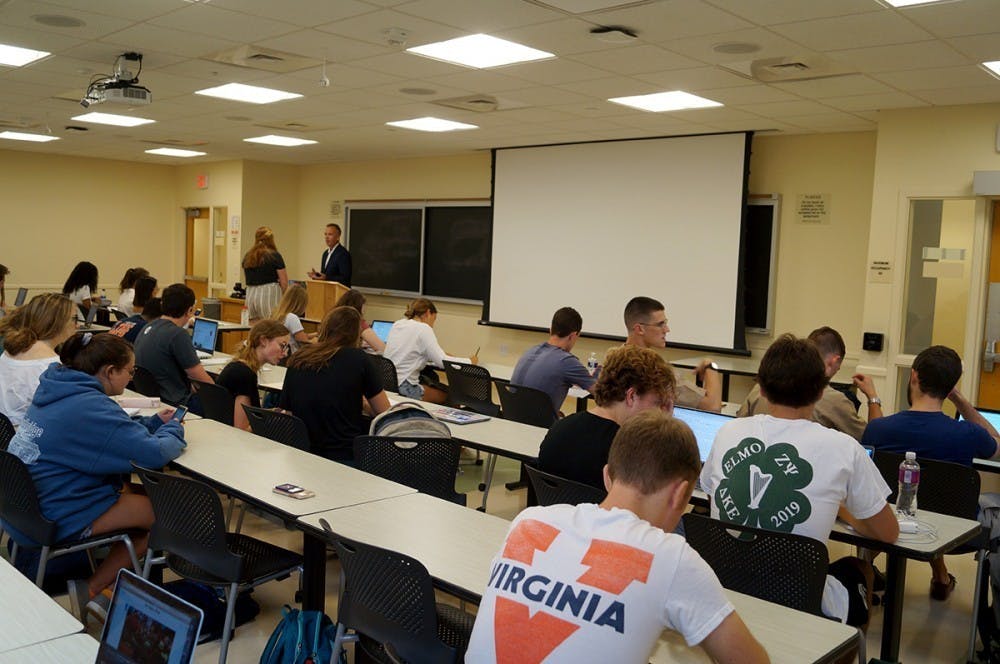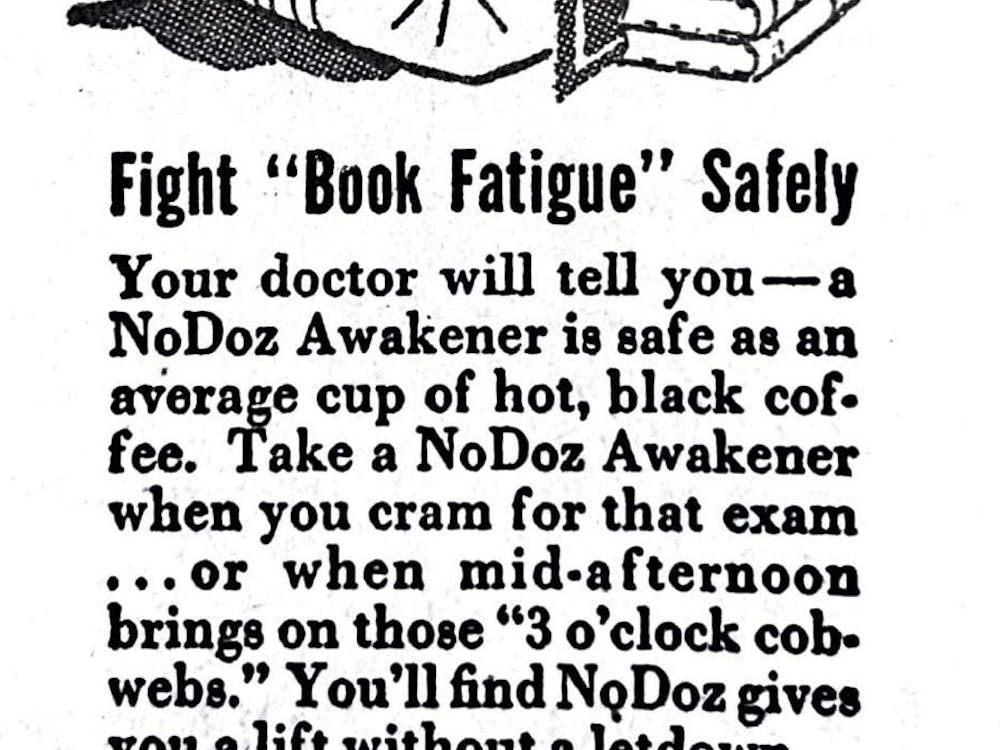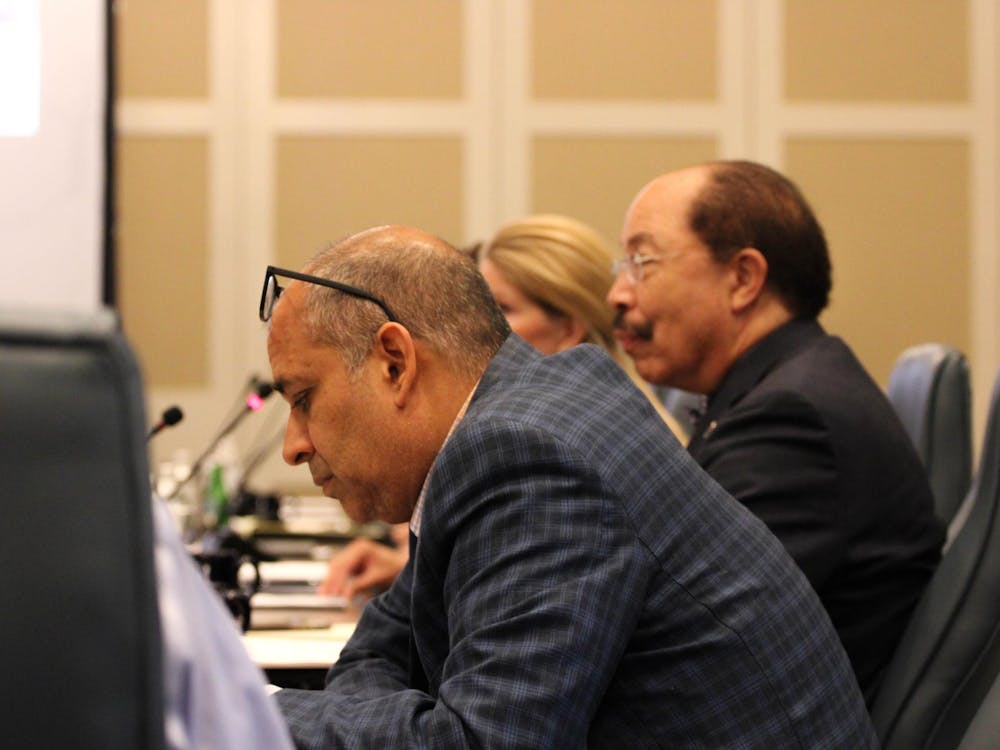The University is experiencing historically high vacancy rates among faculty and staff due to the lingering effects of the COVID-19 pandemic and limited state funding. This issue was discussed extensively at the Aug. 23 Board of Visitors meeting, which included a presentation from Chief Operating Officer J.J. Davis on the so-called “war on talent.”
A Freedom of Information Act completed by The Cavalier Daily revealed that a data set of 3,195 University faculty had a mean salary of $136,013 annually, with a median salary slightly above $100,000. Nearly 50 percent of all faculty listed make $100,000 or fewer, with roughly 5 percent of professors making $60,000 or less. These figures do not include statistics on staff compensation, though the portal will be updated soon with that information.
Faculty members fall into either the teaching and research faculty or administrative and professional faculty category. Employees who do not fall into this category are classified as staff — which includes operational and administrative staff, managerial and professional staff and others.
In 2013, the Board resolved to ensure that the University would sit in the top 20th percentile of competitors in terms of faculty salary. Today, the University has slipped to around the 29th percentile, contributing to the loss of talent as faculty seek out higher-paying positions elsewhere.
At the University of Pennsylvania, Harvard and Columbia, faculty salaries average around $200,000.
Some faculty leaders make significantly more than average — including Craig Kent, executive vice president for health affairs, who makes $1,045,000 a year, and Ian Baucom, executive vice president and provost, who makes $730,000 a year.
Deputy University Spokeswoman Bethanie Glover cited a wide array of causes leading to these historic vacancies, including employees retiring after decades of service, job changes, contracts ending and competition for talent.
This competition, Glover noted, is now more intense than ever.
“U.Va. attracts brilliant faculty, skilled clinicians and patient care leaders and talented staff,” Glover said. “Our workforce is essential to our operation, and competition for employees like those we have at U.Va. has reached new heights both regionally and nationally in a war for talent.”
According to Davis, the historical vacancy rates in the academic division hovered around seven or eight percent — this year, the vacancy rates are nearly double those figures.
The academic division, Facilities Management and administrative support staff have all been affected by increased faculty vacancy rates.
“Right now, we are experiencing the highest vacancy rates in some of our key front-line operational positions in the Academic Division,” Glover said. “We are searching to fill numerous Facilities Management positions for skilled tradespeople and custodial services, as well as positions for administrative support staff, research administrators and IT [and] technical support staff.”
Davis cited COVID-19 as a major cause for the decrease in salary relative to competitors — the University had to establish hiring freezes and rescind planned salary increases.
To help address the issue, the University raised faculty salaries by 5 percent this July and will continue with three years of a five percent annual base compensation increase — a decision authorized by the state. However, the University will only receive $30 million from the state to fund these increases. The rest must come from the University itself.
Currently, the University generates revenue to fund faculty salaries through three different methods. The largest category is institutional funds, which includes the endowment. The second largest category is tuition — both graduate and undergraduate — and finally state appropriations from the Commonwealth.
“I think what we're hopeful for is with the Commonwealth support, and with our ability to use our other revenue sources, is that we can make meaningful progress on faculty and staff compensation,” Davis said.
Raising tuition will be inevitable in funding the salary increase, the Board noted. The group did emphasize a desire to continue to meet 100 percent of demonstrated financial need so that the financial burden of a tuition increase is not passed along to low-income students.
University President Jim Ryan proposed spending more of the endowment on financial aid to ensure that tuition dollars could be used to primarily fund faculty salaries instead.
“If you add up the amount that we've raised — and then contributed from the endowment — on both the scholarship side and the faculty chair, that's over a billion dollars at this point, which is great for the future, in terms of being able to attract talented students and faculty, but also great because this is a way to keep costs down and keep tuition down,” Ryan said.
Overall, Davis emphasized the need to develop a firm plan for further investment in talent.
“We are seeing a war on talent,” Davis said. “I cannot underscore [enough], one of the most important things for us in the next one to three years coming out of this pandemic is to invest in the talent, otherwise we will lose them.”







